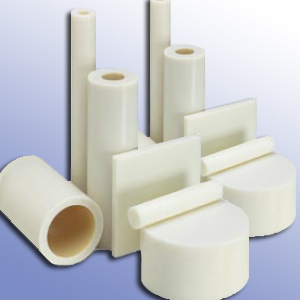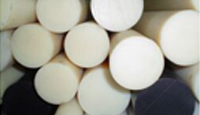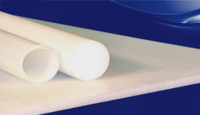
Size and Availability:
Sheet / Plate:
- Thickness: 1/16” to 2” thick
- Sheet sizes: 24”x 48”, 24”x 144” (select sizes)
Rod / Round:
- Diameters: 1/16” dia to 6” dia
- Lengths: 4 ft to 8 ft, varies by diameter


|
Nylon is one of the most widely used and versatile thermoplastic resins. Its combination of physical properties and reasonable price make it a favorite
choice for numerous applications. Nylons toughness, wear resistance, tensile strength and lubricity make it a good choice for many mechanical machine parts.
Extruded nylon type 6/6 is characterized as having an excellent combination of physical properties including: a high melting point, resistant to repeated
impact, low coefficient of friction and a resistance to abrasion. It has good resistance to fuels, lubricants and most chemicals, but is attacked by phenols,
strong acids and oxidizing agents. It is also light in weight, Nylon is 1/7 the weight of Bronze.
Of all the unmodified nylons, Nylon 101 is the strongest, most rigid and has one of the highest melting points. It is commonly specified for screw machined
electrical insulators and food contact parts. It is stocked in both natural and black. Other colors are available on a custom basis. Nylon 101 natural is FDA,
USDA, NSF, and 3A-Dairy compliant.
Features:
- Broadest size range availability
- Good mechanical and electrical properties
- Ideal balance of strength and toughness
- FDA, USDA, NSF and 3-A Dairy Compliant
Applications:
- Bushings and bearings
- Gears and sprockets
- Wear rails, pads and strips
- Pulleys and sheaves
- Conveyor wheels and rollers
- Feed screws
- Star wheels
Engineering Note:
Nylons can absorb up to 7% (by weight) water under high humidity or submerged in water. This can result
in dimensional changes up to 2% and a corresponding reduction of physical properties. Proper design
techniques can frequently compensate for this factor.
|